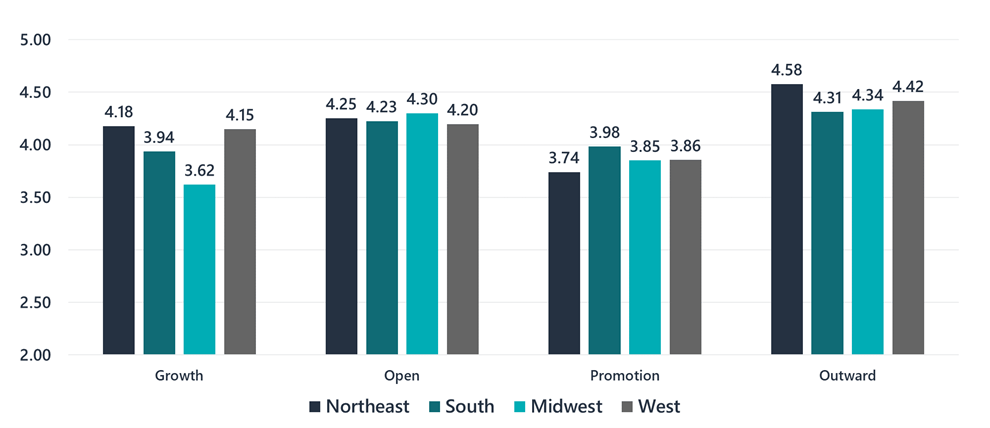I recently partnered with Aimpoint Research to investigate how mindsets might differ across different demographic profiles, including political affiliation, income level, gender, education level, generation, geographic region (in the United States).
I am finding the results quite interesting. In the next several articles, I will be sharing the results of this effort.
This week, I’m covering how mindsets differ by geographic region in the United States.
Research Information
Our sample was designed to be a decently close representation of the United States population at large. We ended with a sample of 587.
What I am presenting to you is the average mindset scores across different U.S. geographic regions. I was able to find unique differences across these regions. To me, these differences are interesting, somewhat meaningful, but they ARE NOT technically statistically significant.
What this means is that we can infer that while one group (e.g., those in the Northeast) may have a more positive mindset than another group (e.g., those in the Midwest), we will surely find some people in the Midwest that have more positive mindsets than some people in the Northeast.
Regardless, it is interesting to see the differences.
Mindsets by U.S. Region
Here are the results:

At a high-level:
- There does seem to be differences in mindsets across U.S. regions, but not in any predictable way.
- There wasn’t much difference across regions for Open Mindset, but there are large differences across regions for Growth Mindset.
Specific Findings:
- Fixed to Growth Mindsets. Those in the Midwest, on average, have the most fixed mindsets, followed by those in the South. This means that they seem to be more focused on looking good (and avoiding failure). Those in the Northeast and West have the most growth mindsets, which means that they seem to be more focused on learning and growing.
- Closed to Open Mindsets. There weren’t large differences across regions, but the data points toward the Midwest being the most open-minded and the West being the most close-minded.
- Prevention to Promotion Mindsets. Those in the Northeast, on average, have the most prevention mindsets. This means that they seem to be the most focused on avoiding problems (as opposed to reaching goals). Those in the South have the most promotion mindsets, which means that they seem to be the most focused on reaching goals (as opposed to avoiding problems).
- Inward to Outward Mindsets. Those in the South and the Midwest appear to have the most inward mindsets. This means that they are more inclined to see others as objects (as opposed to people). Those in the Northeast seem to have the most outward mindsets, which means that they are more inclined to see others as people (as opposed to objects).
While these are very interesting findings, they are also generalities. These results DO NOT suggest, for example, that all people in the Northeast are outward-minded and that all people in the Midwest are fixed-minded.
If you want to take the mindset assessment for yourself, you can take it here: FREE Personal Mindset Assessment










